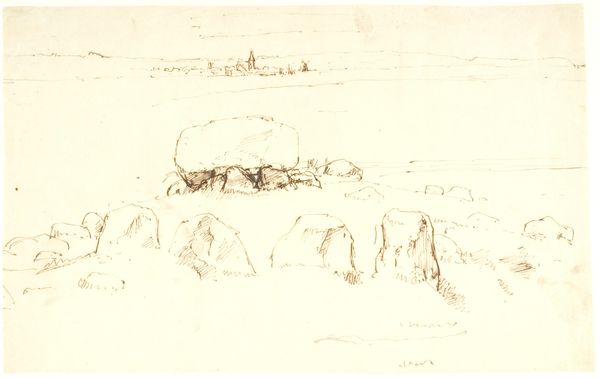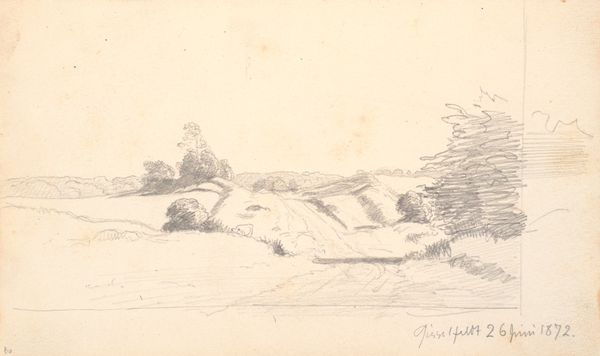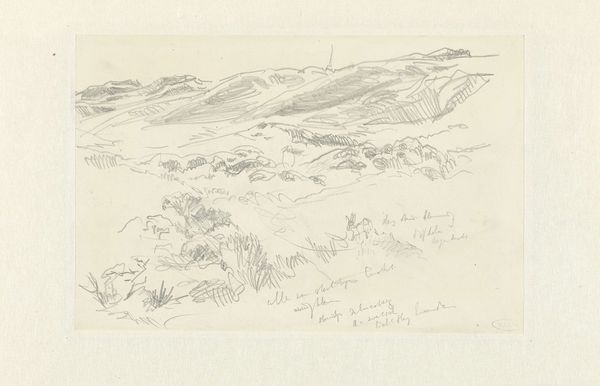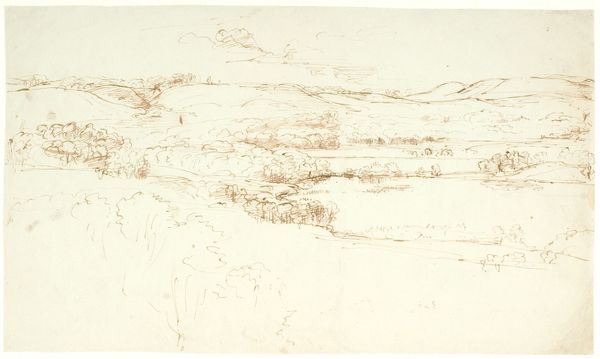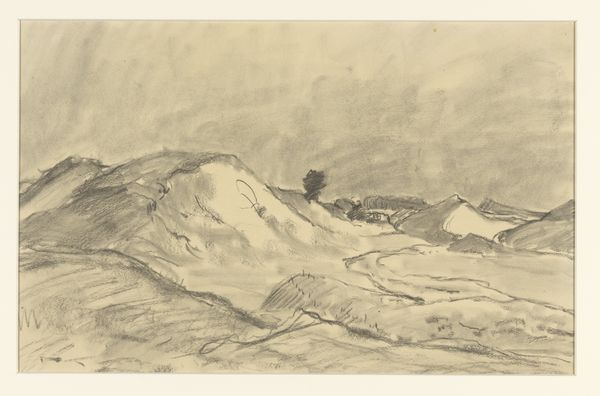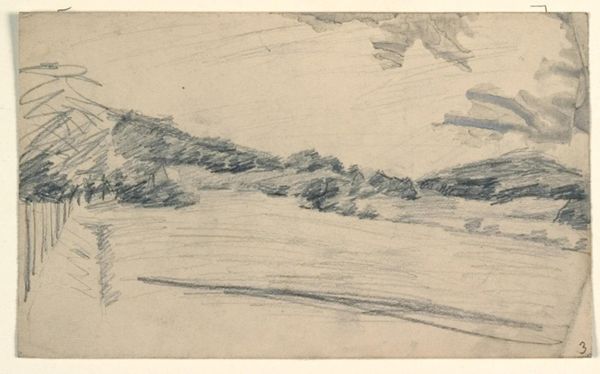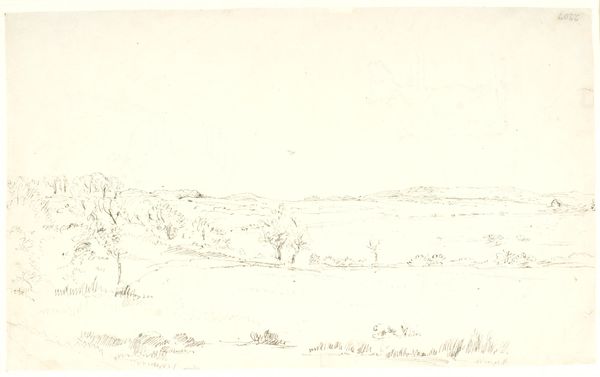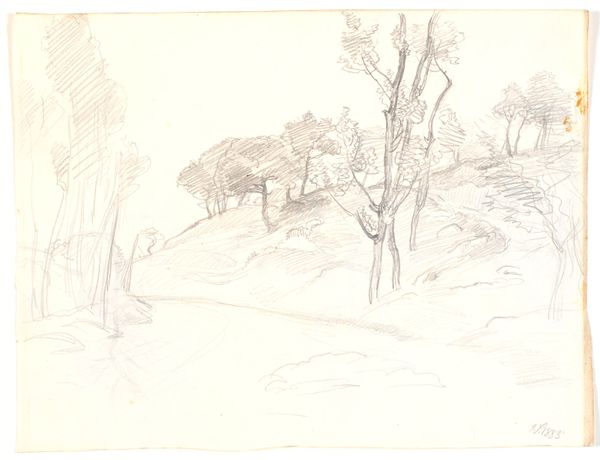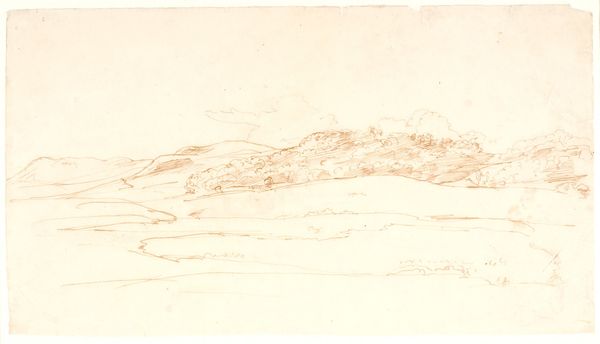
drawing, pencil
#
pencil drawn
#
drawing
#
pencil sketch
#
landscape
#
pencil drawing
#
pencil
#
realism
Dimensions: 254 mm (height) x 202 mm (width) (bladmaal)
Editor: So, this is "Strand ved Fyns Hoved" a pencil drawing by J.A. Jerichau from 1910, housed at the SMK. It's quite understated. What strikes me is its simplicity and softness; a very serene landscape. How do you interpret this work within its historical context? Curator: It’s tempting to view this sketch solely through the lens of its aesthetic qualities. However, let’s consider the sociopolitical backdrop. 1910 was a time of rapid industrialization and urbanization across Europe. How might an artist’s choice to depict a quiet, rural landscape – rather than, say, a bustling city scene – reflect anxieties about modernity or perhaps a longing for an idealized past? Editor: That's a perspective I hadn’t fully considered. Could it be a subtle commentary on the changing times? Were artists actively choosing subjects that represented an escape? Curator: Precisely. Consider the rise of landscape painting as a genre often intertwined with national identity and romantic notions of unspoiled nature. Jerichau's work participates in this discourse, yet its simplicity also sets it apart. It feels almost deliberately un-monumental, a subtle act of resistance against grand narratives. Editor: I see what you mean. So, beyond just being a pleasant scene, it also becomes a statement by implication, a quiet rebellion against the pervasive march of progress. Curator: Indeed. What’s your takeaway, considering all this? Editor: I think I initially overlooked its potential as a socially aware piece. Seeing it as part of a dialogue with contemporary concerns really enriches the work. Curator: Agreed. That interplay between the visual and the historical is precisely where art becomes most compelling.
Comments
No comments
Be the first to comment and join the conversation on the ultimate creative platform.

